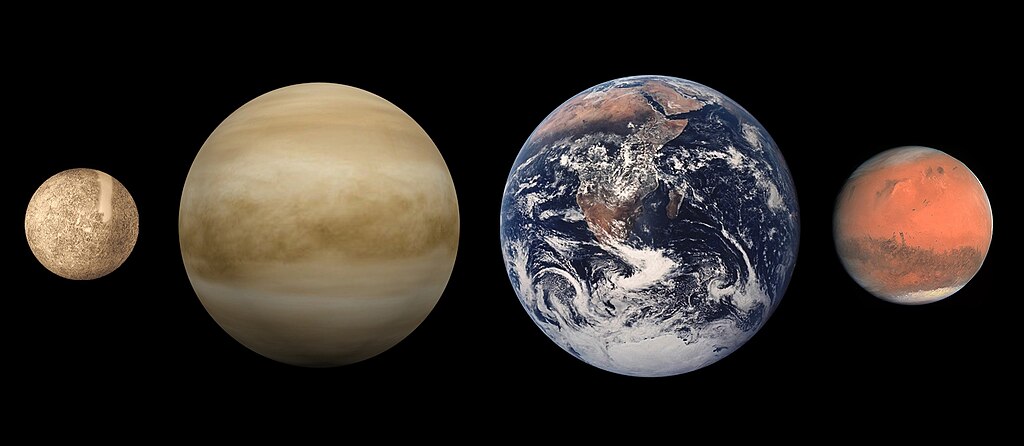Terrestrial planet size comparisons
http://solarsystem.nasa.gov/multimedia/gallery/terr_sizes.jpg
Uploaded to commons from the english wikipedia; description page was here
- 19:27, 20 March 2006 Brian0918 1500x653 (499,869 bytes)
Also previously uploaded as Image:Terr sizes.jpg
- 17:34, 24 June 2005 RHorning 1,500×653 488 KB Comparison of sizes of the terrestrial planets.
A terrestrial planet is a planet that is primarily composed of silicate rocks. The term is derived from the Latin word for Earth, "Terra", so an alternate definition would be that these are planets which are, in some notable fashion, "Earth-like". Terrestrial planets are substantially different from gas giants, which might not have solid surfaces and are composed mostly of some combination of hydrogen, helium, and water existing in various physical states. Terrestrial planets all have roughly the same structure: a central metallic core, mostly iron, with a surrounding silicate mantle. Terrestrial planets have canyons, craters, mountains, volcanoes and secondary atmospheres.
| Denne fil er i offentligt domæne i USA fordi den udelukkende er skabt af NASA. NASAs ophavsretspolitik erklærer at materiale udgivet af NASA ikke er omfattet af ophavsret medmindre andet er nævnt. (Se også Template:PD-USGov, NASAs ophavsretspolitik eller JPLs politik for brug af billeder.) |  | |
 |
Advarsler:
|
Yderligere oplysninger om licens til billedet kan findes her. Sidste ændring: Wed, 14 Feb 2024 15:46:36 GMT
